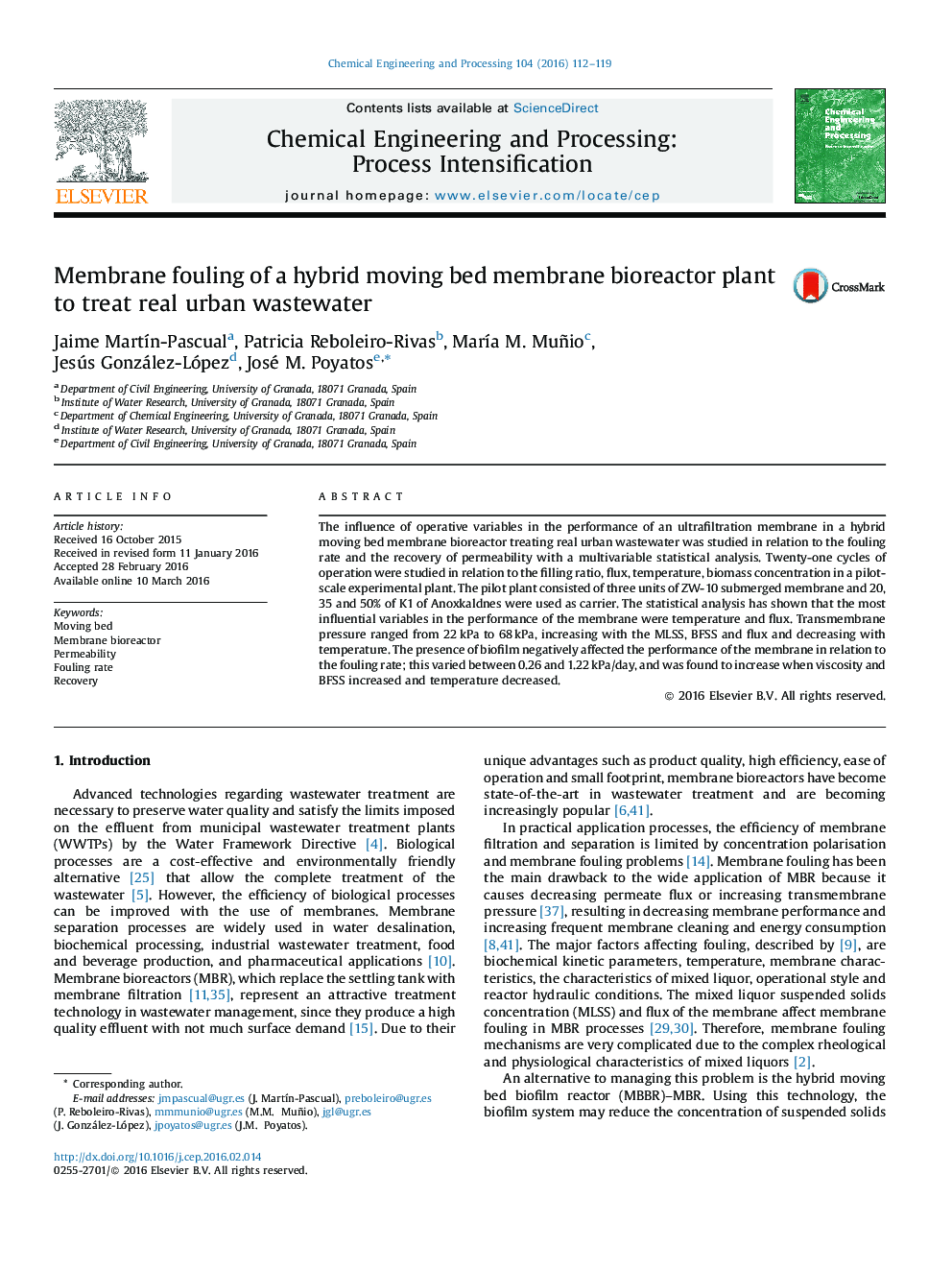| Article ID | Journal | Published Year | Pages | File Type |
|---|---|---|---|---|
| 687793 | Chemical Engineering and Processing: Process Intensification | 2016 | 8 Pages |
•Temperature and flux were the most influential variables in the membrane performance.•Biofilm density in the MBBR-MBR increased transmembrane pressure.•The presence of biofilm increased the fouling rate.
The influence of operative variables in the performance of an ultrafiltration membrane in a hybrid moving bed membrane bioreactor treating real urban wastewater was studied in relation to the fouling rate and the recovery of permeability with a multivariable statistical analysis. Twenty-one cycles of operation were studied in relation to the filling ratio, flux, temperature, biomass concentration in a pilot-scale experimental plant. The pilot plant consisted of three units of ZW-10 submerged membrane and 20, 35 and 50% of K1 of Anoxkaldnes were used as carrier. The statistical analysis has shown that the most influential variables in the performance of the membrane were temperature and flux. Transmembrane pressure ranged from 22 kPa to 68 kPa, increasing with the MLSS, BFSS and flux and decreasing with temperature. The presence of biofilm negatively affected the performance of the membrane in relation to the fouling rate; this varied between 0.26 and 1.22 kPa/day, and was found to increase when viscosity and BFSS increased and temperature decreased.
